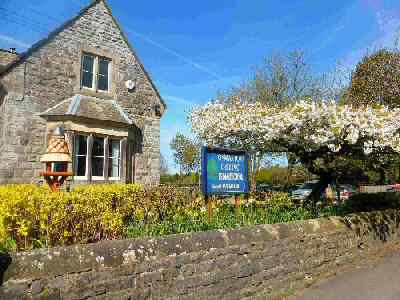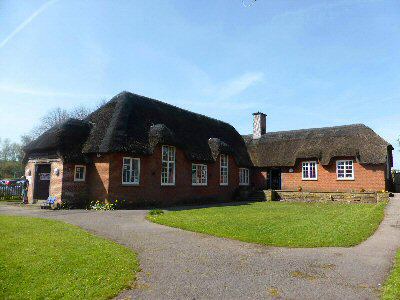OSMASTON
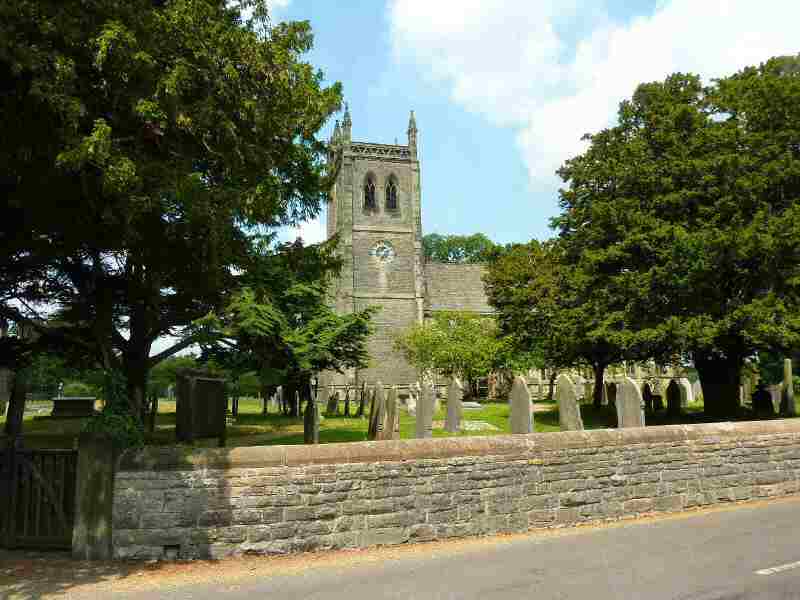
PLAN YOUR VISIT
Location: Osmaston is off the A52 road from Derby – Ashbourne (2 miles) – SK200439.
Visit: Visit the church, watch the ducks on the village pond, sit on the horseshoe seat, and enjoy the hospitality at the Shoulder of Mutton public house. If you feel a little more energetic, walk around Osmaston Park.
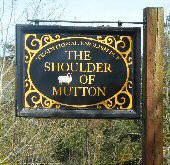
Refreshments: The Shoulder of Mutton Public House is a spacious, charming old pub with a large garden with tables. Neighbouring Ashbourne has numerous pubs, restaurants, and cafes to cater for all tastes.
Walk: Osmaston Park Walk is a lovely, relaxing walk through the park woodlands to the pretty village of Shirley, then returning alongside Shirley Brook, past an ornamental lake, before climbing gently back to Osmaston. Although this is a very popular and well-known walk, part of the route is often very muddy. Fortunately, a boardwalk saves you from sinking into the mud.
The route from Osmaston takes you down Park Lane, between two of the park’s lakes. With its large wheel, the old water mill has a roof similar to that of a Swiss chalet. Shirley is an appealing village with a fine church and an ancient inn, mentioned in the Domesday Book of 1086.
Special Places of Interest in the Locality: Ashbourne is one of Derbyshire’s finest towns, with a wealth of Georgian architecture and a cobbled marketplace. – Tissington is one of the prettiest and most unspoilt villages in Derbyshire and the whole of the country. Neat, well-tended gardens and limestone cottages behind wide grass verges backed by mature trees give a feeling of peace and tranquillity. Tissington Hall, a fine Jacobean manor house in the heart of the village, is open for guided tours on selected dates in the summer. – Ilam Village, with its alpine-style cottages and close proximity to Dovedale, is a popular attraction. The National Trust grounds and country park of Ilam Hall are open to the public.
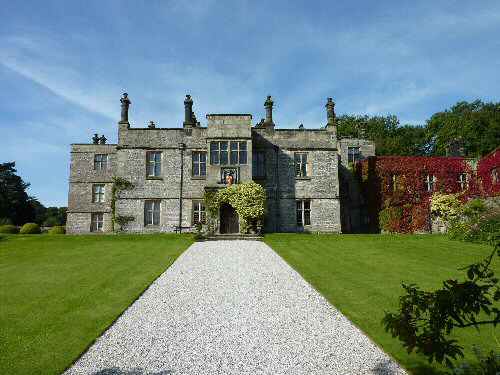
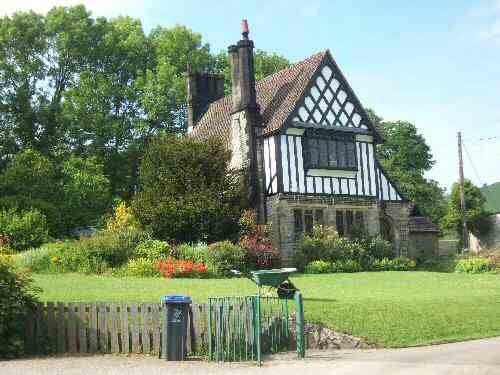
INTRODUCTION

Osmaston is only a mile from the busy A52 that links Ashbourne and Derby, the first-time visitor must think they are in another world when they arrive at Osmaston. Delightful half-timbered cottages under thatched roofs, lattice windows, a duck pond overlooked by a village green, a 160-year-old church and an old world pub combine in a beautiful picture postcard setting. Thatched cottages are rare in Derbyshire, but at Osmaston, even the village hall has a thatched roof.
Osmaston, an ancient village, was known as Osmundestune in the Domesday Book. Its population was 60 to 80 people then, which was quite large for those days. One hundred and fifty years later, the village’s present name and other versions were in use.
FRANCIS WRIGHT
The first stone was laid in 1845 for the construction of Osmaston Manor, which was completed four years later. Francis Wright, the owner of Butterley Iron Works, had it built. During his lifetime, he built St Pancras Station and carried out other important projects at home and abroad.
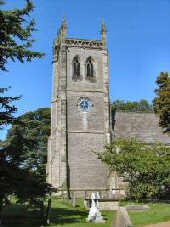
Wright was a considerable benefactor to the village, building a new church and schools before work started on his home. He also built or rebuilt the estate properties in the village and planted many trees. At Ashbourne, Wright had St John’s Church built. However, although a memorial in his honour is in the marketplace, he was not a universally popular man. His action of stopping the annual fair, which he disapproved of, and his efforts to halt Shrovetide football did not go down well with many of the inhabitants.
George Brittlebank, a lawyer, lived at Monument House in Ashbourne. In 1864, when the police banned Shrovetide football, he threw the ball to the angry crowd after it had been smuggled to him across the marketplace in a shopping basket carried by a local woman. He promised to defend anyone arrested playing the game at no cost. This action signalled the game to start a tradition that continues today.
Francis Wright died in 1873, and today, nothing remains of Osmaston Manor except the terraces and the kitchen gardens. The most interesting feature is an ornate 150-foot-high Italian-type tower that keeps visitors guessing its purpose. It was a communal chimney built to serve the whole Manor. The house had 70 rooms, a bake-house, a wash-house and a brew-house and a central tunnel carried smoke to the chimney in the garden.
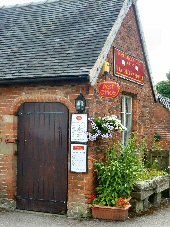
SIR ANDREW WALKER
After Wright’s death, his heir only lived spasmodically at the house before departing permanently after putting the house up for sale. In 1883, a Liverpool Walker Art Gallery donor, Sir Andrew Barclay Walker, purchased the property and moved to Manor with his family. However, the situation changed when one of his descendants, Sir Ian Walker, inherited the Okeover estate on the western side of Ashbourne in 1955. He added their name to his own and moved to Okeover Hall six years later. With no buyer forthcoming for the Manor, it was decided to demolish it. The family maintained the estate after removing the last stone in 1966.
POLO GROUND
The Gothic Park Lodge remains, and the former polo ground that used to attract thousands of well-dressed visitors to Osmaston now belongs to the village. The Annual Ashbourne Agricultural Show, organised by the Ashbourne and District Royal Shire Horse Society, is held there on the third Saturday of August every year. The area has a strong tradition for breeding shire horses. Apart from the shires, other animals are on display at the show, with craft stalls, trade stands, and plenty of family entertainment.
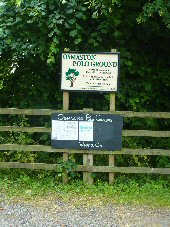
THE VILLAGE
The two oldest cottages with thatched roofs overlook the duck pond. Where an unusual seat made up of discarded horseshoes looks uncomfortable, but is not. The four thatched cottages facing the car park were built to celebrate the coronation of King George VI, and the village hall opened on Coronation Day 1937. It is used for various functions, including dining facilities for local school children. A Post Office operates four days a week in an outbuilding of the popular Shoulder of Mutton public house. Sadly, the records of the old pub did not survive a fire. A stone record dates back to 1805 but is almost certainly much older.
The Wright family built most of the remaining buildings in the village for the occupation of their workers. St Martin’s Parish Church, built in 1845 to replace an earlier building, has many tributes to its benefactors, the Wright family. The register of the church dates to 1606.
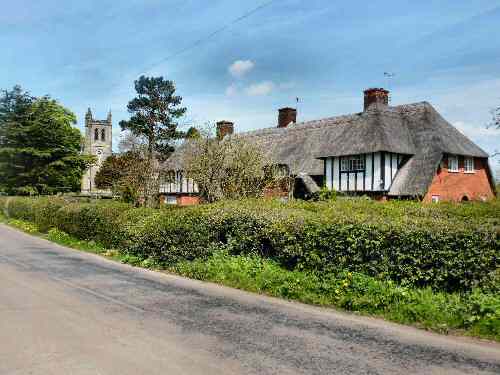
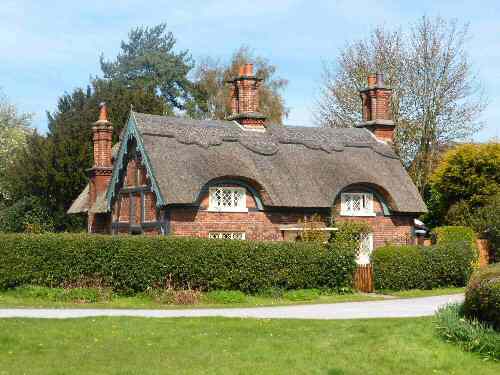
TEN FASCINATING FACTS ABOUT OSMASTON
1. Osmaston is a very picturesque estate village with pretty cottages along tree-lined lanes.
2. The Manor, designed by Henry Isaac Stevens for Francis Wright and completed in 1849, was similar to Tissington Hall, the home of Wright’s wife’s family, the FitzHerberts.
3. Built on a large scale, the Manor had relatively modern amenities and was one of only a few in the country with central heating. A gymnasium and indoor swimming pool were added before the end of the century,
4. Initially, the Manor had no chimneys and smoke was diverted underneath the floor along a smoke tunnel to an external tower. It was only a partial success, and chimneys were added later. The smoke tower remains reduced by 30 feet in height.
5. The Manor was used as a Red Cross hospital during World War II. At first, it was mainly a convalescent home for the military. The patients were allowed to visit Ashbourne and could frequently be seen strolling around in their ‘hospital blues’, a bright blue flannel-like suit with a white shirt and bright red tie.
6. After D-Day, life at the hospital changed as quite seriously injured patients were admitted for treatment.
7. The Walker-Okeover family still owns the land; the estate hosts the Ashbourne Shire Horse Show.
8. Osmaston Park is now an exclusive wedding venue with breathtaking views from the remaining former Manor garden terraces.
9. The bridleway through Osmaston Park to Shirley leads to the picturesque and much-photographed watermill at the southern end of a park lake. It has a large waterwheel and a roof similar to a Swiss chalet.
10. Shirley is at the other end of the bridleway, an appealing village with a fine church and an ancient inn. St Michael’s Church has been heavily restored and has lost its Norman shape. John Cowper Powys, one of England’s leading religious novelists, spent the early years of his life in the village where his father was the vicar. The Sarcen’s Head takes its name from the crest on the arms of the Shirley family.
Osmaston Park Walk
